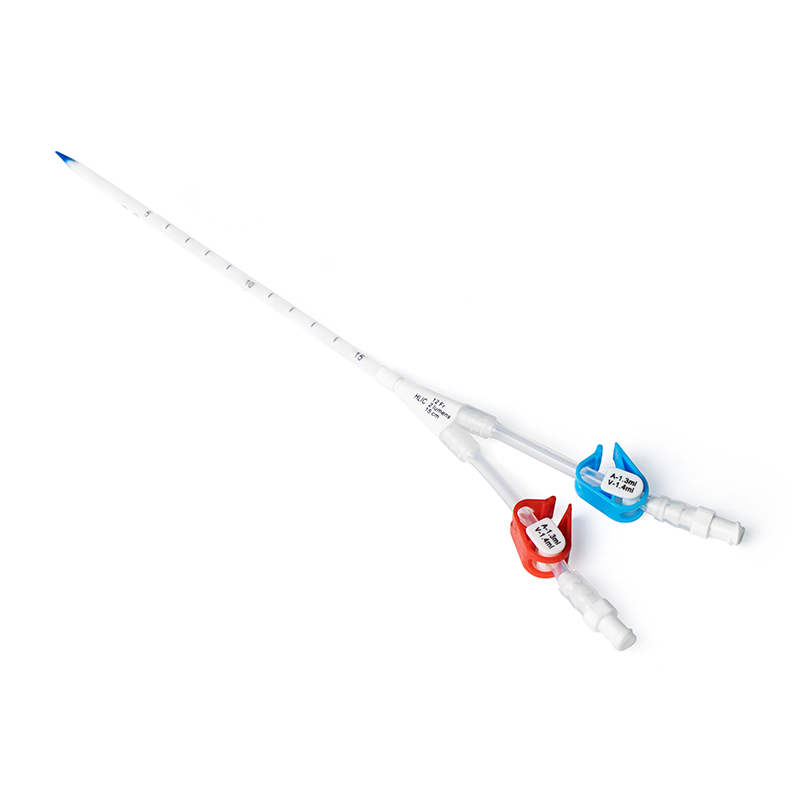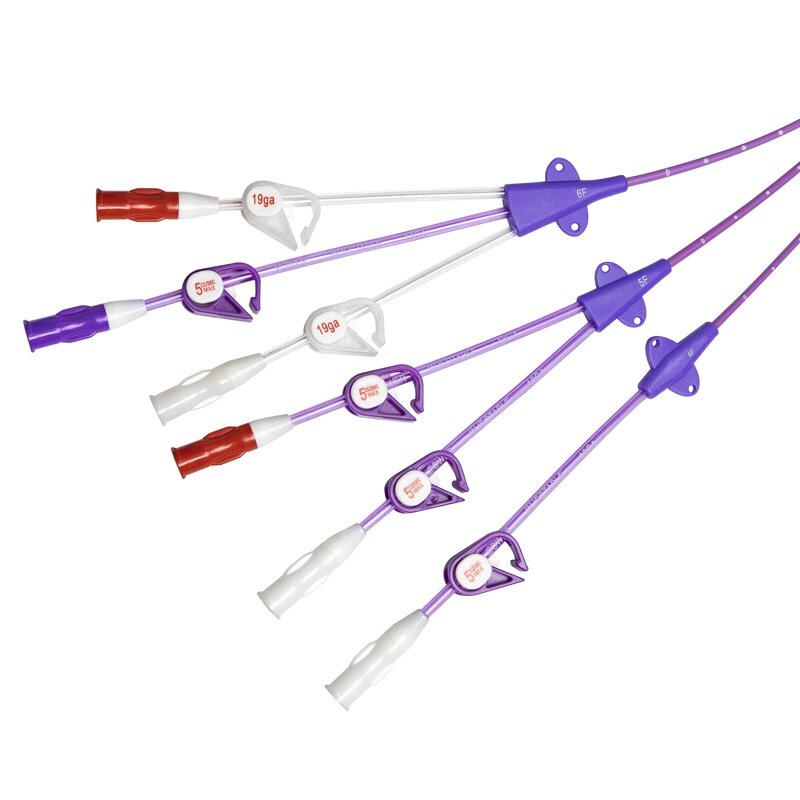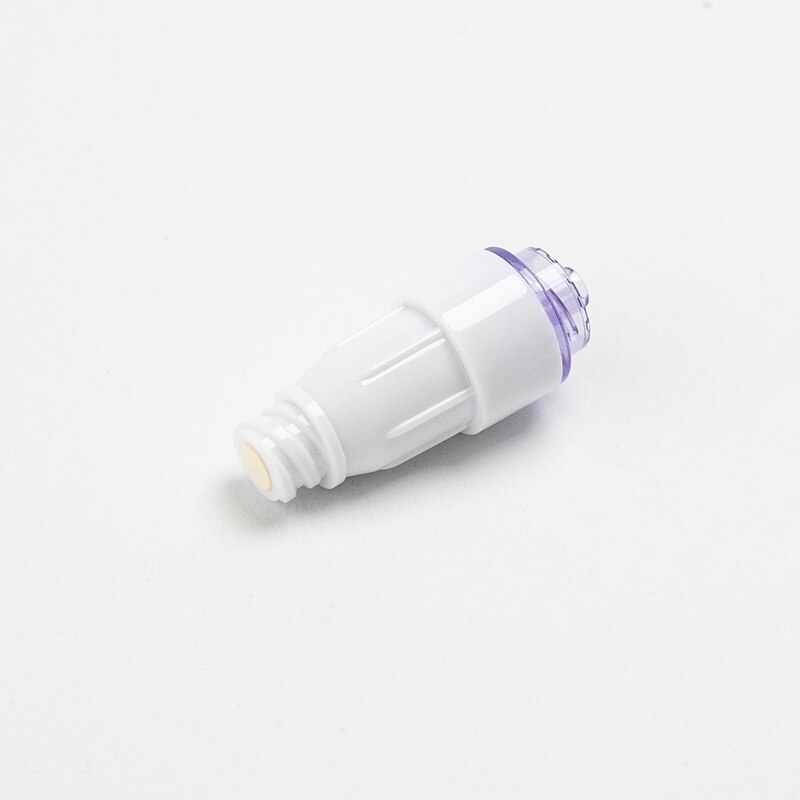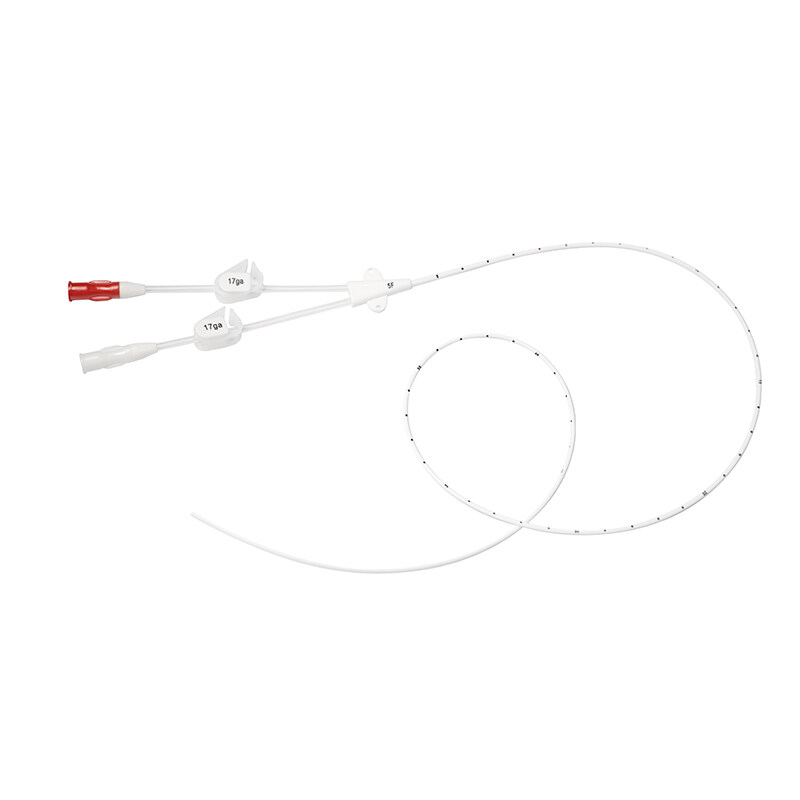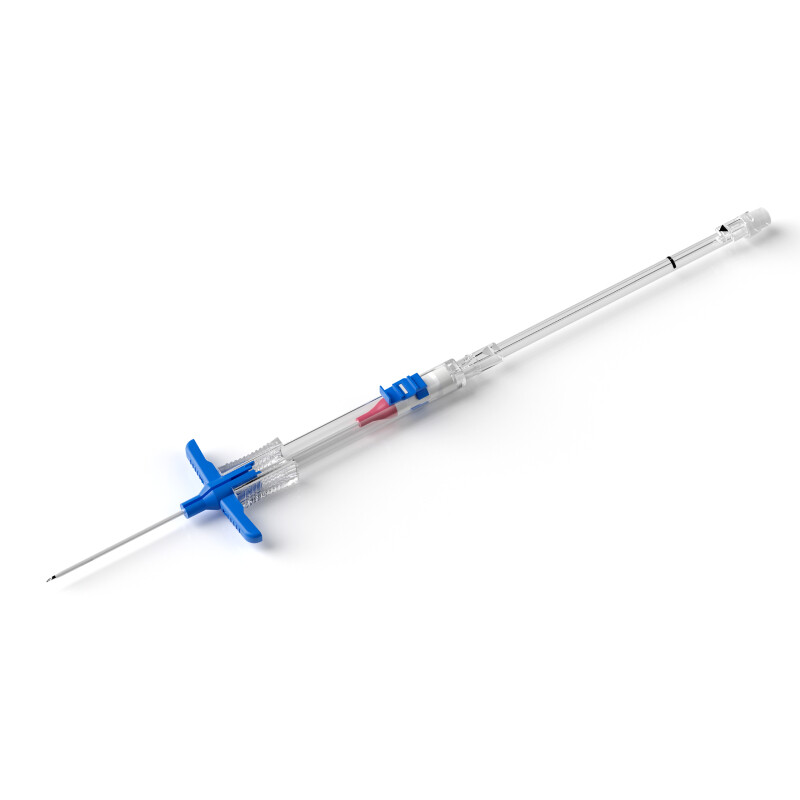With the development of medicine, pharmacy, materials science and other disciplines, various new vascular access catheters and auxiliary medical consumables are gradually widely used in clinical practice. The rapid development of intravenous infusion technology and the continuous improvement of the operation level of medical staff have made more effective treatment and more comfortable and safe performance.
Mini-Midline is a new peripheral intravenous infusion tool designed and developed by Hao Lang Company,it is 8-10 cm long, which can be placed in the shallow vein of the forearm by conventional puncture technique and also can be place into the deep vein in the middle of the upper arm with ultrasound guidance technology, and the tip of the catheter does not exceed the armpit.
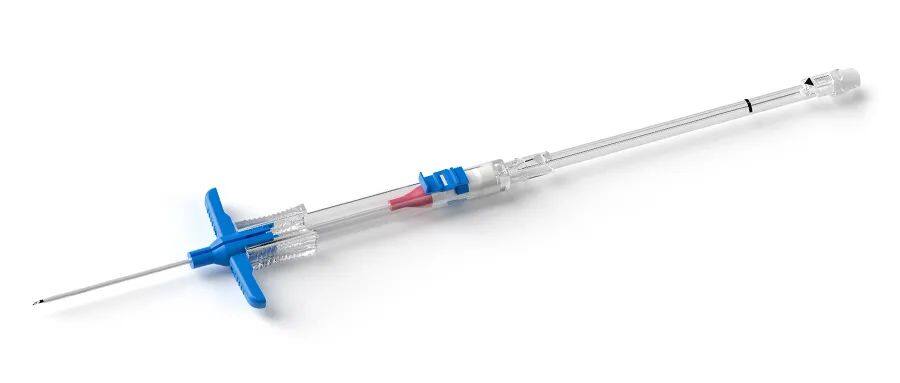
Mini-midline all-in-one accelerated Sedinger technology allows nurses to successfully place tubes in 5-7 minutes without the need for a maximum sterile barrier or X-ray positioning, instantly meeting high-flow infusion needs. The catheters are made of modified polyurethane and have a dwelling time of 5 to 30 days, the incidence of phlebitis and catheter-associated bloodstream infections is much lower than that of peripheral venous indwelling IV and central venous catheters.
This product is currently the first product in the Chinese market, effectively full the line of clinical vascular access catheters. For clinical caregivers, the emergence of new intravenous access devices has both reduced workload and increased satisfaction. However, it is worth noticing that while improving the success rate of punctures, it is also necessary to take into account the problem of catheter blockage caused by assessment and improper care.
The relevant factors of catheter blockage include the following 3 points:
- The age and disease of the patient: hypertension, hyperglycemia, hyperlipidemia, tumor patients are high-risk groups;
- The location of placing the catheter: If veins with rich venous valves (cephalic veins, lower extremity veins) is catheterized, thrombotic blockage is prone to occur .The puncture point located in the elbow socket has a higher risk of thrombosis than in the middle and upper arms
- Flushing tube and sealing method: The push-stop-push pulse flushing method is not used, and the positive pressure state cannot be reached when sealing the tube, which are the main reason for the blockage, accounting for up to 26%. Studies have shown that with the extension of catheter indwelling time, the incidence of catheter blockage increases and has become the most common cause of unplanned extubation. According to the nature of the blockage, it is divided into: thrombotic blockage, mechanical blockage, and drug-related blockage. Among them, thrombotic blockages account for the majority.
In the process of clinical use of mini midline, how should we effectively prevent catheter blockage?
First: Thrombotic blockage
Classification:
1.Blood reflux
2.Fibrin sheath
3.Vascular endothelial injury
4.Hypercoagulation of blood
Causes:
1. Incorrect use of negative pressure infusion joint;
2. The syringe is pushed to the bottom end, resulting in blood aspiration back;
3. The frequency of the flushing tube does not meet the requirements;
4. After the infusion, the rehydration fluid cannot be replaced in time;
5. The weight on the catheter side arm is overload and compress the catheter side arm.
6. The catheter clamp is not clamped as specified.
Precautions:
1.Flushing the tube in time, perform flush and seal tube correctly after daily infusion of the drug. Pulse flushing and sealing tube method: push syringe once and then stop ,to form a small vortex in the catheter to strengthen the flushing effect. The minimum amount of flushing fluid is 2 times the volume of the catheter and the additional device.
2.Tube sealing method: Positive pressure sealing is performed at a controlled speed, if the blood returns in the catheter due to external force factors, increase the times of positive pressure sealing. If more blood is found in the extension tube, the tube should also be sealed in time.
3. Closely observe the patient's condition, instruct the patient not to compress or carry out strenuous exercise with the catheter inserted arm , and do not measure blood pressure in the catheter side arm, reduce the occurrence of catheter return.
4. If there is no infusion treatment, the extension tube should be fixed with a U-shape, and the catheter clip should be clamped close to the puncture point, which can alleviate the occurrence of blood return in the catheter.
Second: mechanical blocking
Causes:
1. The catheter placement position is improperly selected, the catheter spans the elbow socket, or the tip is located at the armpit;
2. The catheter is not fixed as specified, and when the forearm is bent, the catheter is kink at the elbow socket;
3. The tip of the catheter is attached to the vessel wall.
Precaution:
1. Evaluate blood vessels meticulously : choose a thick diameter, straight path blood vessel with few branches and venous valve.
2. Select the best puncture area: if puncture at forearm, the tip of the catheter must not pass through the elbow socket; if puncture at upper arm, at least 5 cm area on the elbow stripe, and the tip does not exceed the armpit.
3. Specification fixation: when fixing the catheter, expose 0.5-1cm; use a transparent dressing to facilitate monitoring of the catheter situation and timely intervention.
Third: drug-induced blocking
2021 I N S: If the drugs/solutions come into contact with each other, high-risk precipitation occurrence should be checked .
Causes:
Precipitation is formed between contraindicated drugs
High concentration drug deposition
Precaution:
1. Choose a transparent and visible infusion line, drug filter
2. Evaluate the compatibility between infusion drugs, to avoid compatibility contraindications .
3.Pay attention to drugs that are contraindicated with normal saline and heparin sodium
4. Have to flushing the tube before and after the use of infusion
5. When infusing high-concentration drugs, increase the frequency of flushing tubes, and use infusion pumps to control the infusion speed
Bibliography:
【1】Expert consensus on safety management of central venous vascular access devices (2019 edition)[J].Chinese Journal of Surgery, 2020(04):261-272.
【2】Song Lei, Wei Lili, Jiang Wenbin, Shan Xinzhi, Zhu Hua, Wan Youdong, Li Jifeng, Pan Xinting. Ultrasonic guidance of Midline catheter can reduce the incidence of catheter-related bloodstream infection[J].Chinese Journal of Emergency Medician,2021,30(04):407-413
【3】Infusion Nurses Society. Infusion therapy standards of practice[J]. J Infus Nurs, 2021, 41(1S): S113-S116.
【4】Brunelli SM, Turenne W, Sibbel S, et al. Clinical and economic burden of bloodstream infections in critical care patients with central venous catheters. J Crit Care 2016;35: 69–74.
【5】Becerra MB, Shirley D, Safdar N. Prevalence, risk factors, and outcomes of idle intravenous catheters: an integrative review. Am J Infect Control 2016;44 e167-7.
【6】Chopra V, Flanders SA, Saint S, Woller SC, O’Grady NP, Safdar N, et al. The Michigan appropriateness guide for intravenous catheters (magic): results from a multispecialty panel using the RAND/UCLA appropriateness method. Ann Intern Med 2015;163(Suppl):S1–40.

